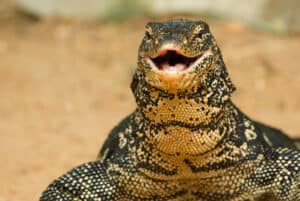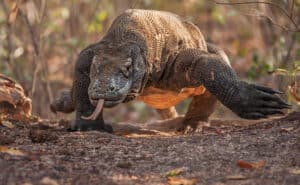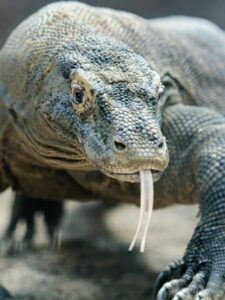Spend enough time around a lizard, and you’ll find they’re actually quite social animals with lots of surprisingly intricate methods of communicating— not just with one another but also with you! Perhaps at some point, you’ve noticed your bearded dragon or even a wild anole bobbing up and down rapidly as if they were in the middle of an intense workout routine. So, why do lizards do push-ups? What purpose do they serve socially? What kinds of lizards engage in this strange behavior?
Read on as we explore the lizards that do push-ups and the reasons why this unique behavior is far more than merely a strange exercise routine taking the reptile world by storm.
Why Lizards Do Push-Ups
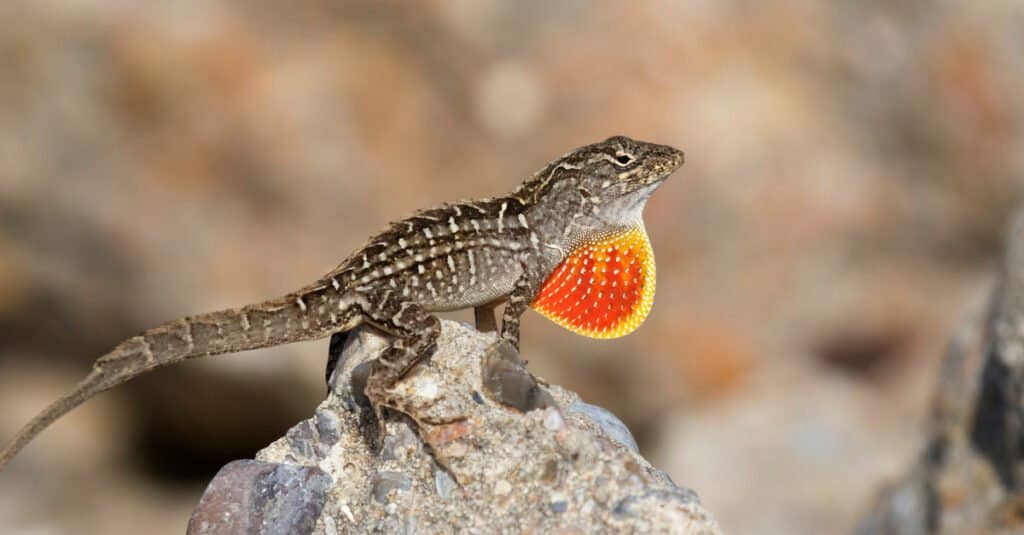
Male anoles do “push-ups” to show off their vibrant dewlaps to female lizards.
©Natalia Kuzmina/Shutterstock.com
There are three main reasons why many species of lizards sometimes bob up and down in a “push-up” motion. These include:
- Displaying dominance towards another lizard and/or assessing their physical size and strength (usually between males)
- Courting another lizard for mating (usually done by males towards females)
- To get another lizard’s attention (or, as displayed often by pet lizards in captivity, to get their owner’s attention; can be displayed by males or females)
It turns out, the “push-up” display amongst lizards is actually quite nuanced and context-dependent! Many different species of lizards demonstrate this behavior both in captivity and the wild. However, the reasons for this can be very different depending on the situation a lizard is in. The display can have a wide range of meanings, from “back off” to “Hey, look at me!”
And push-ups are far from lizards’ only means of communication! Even though most species don’t vocalize much (or at all), they use many different gestures to signal or communicate information to one another. From arm-waving to head-bobbing to a full-body push-up or even extending one’s brightly-colored dewlap, these seemingly silent reptiles are actually quite talkative, just not in a way we humans can easily understand or recognize.
Next, let’s break down the most common reasons why lizards do push-ups in a bit more detail.
Displaying Dominance to Other Lizards or Predators
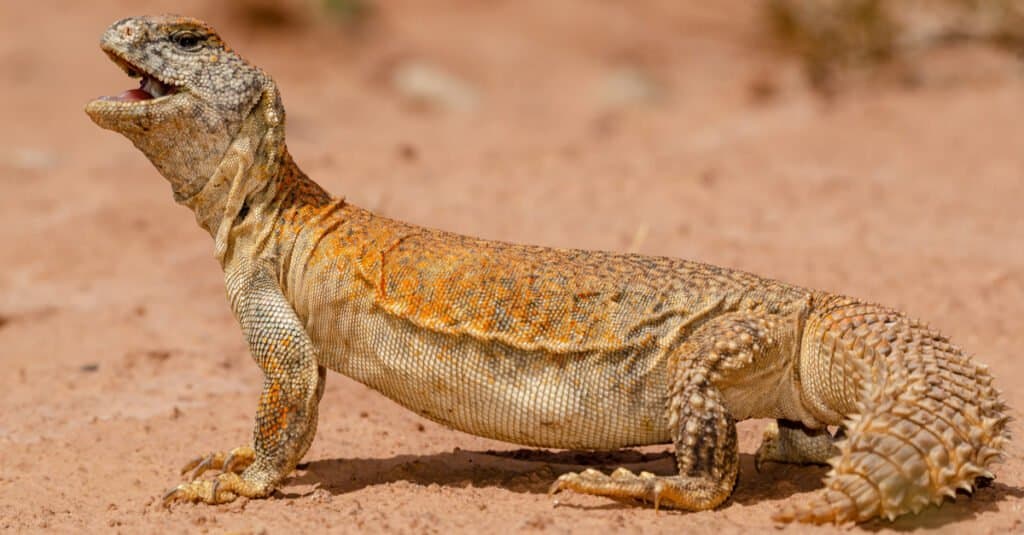
Some lizards use push-ups as a defense mechanism.
©Luis Montero de Espinosa/Shutterstock.com
One of the main reasons why (typically male) lizards do push-ups around one another is to make themselves look larger and more intimidating. The behavior also allows the lizards to assess each other’s physical size and strength. Most species use push-ups in this way to either compete with one another for mates/resources or to ward off predators.
In most cases of lizards doing push-ups, it’s two males posturing at one another while competing over mates, food, or territory. This is typically done to decide if a fight is necessary and to allow one of the lizards to back down before a fight does occur. Think of it as their way of puffing their chests out at one another in hopes of intimidating their opponent.
Aside from simply making themselves look scary, lizards also do push-ups to gauge each other’s physical size and strength. If one of the lizards is noticeably weaker than the other, it may take this chance to escape.
What’s more, lizards don’t just do push-ups to scare off each other. They also sometimes do it to keep away predators like snakes, hawks, and even humans. By making itself look a lot larger and more menacing, a lizard can hopefully startle its attacker for a moment. In the meantime, the lizard will run to safety. It’s not only male lizards doing push-ups, either, as females have been documented displaying the behavior, too!
Many species will even combine this behavior with tail-dropping, or autotomy! After startling a predator, the lizard may sever their own tail to further distract the animal hoping to eat them. Some lizards, like alligator lizards, can even re-grow the lost tail, giving them an opportunity to drop it again later for another quick getaway.
Push-Ups as a Courtship Display
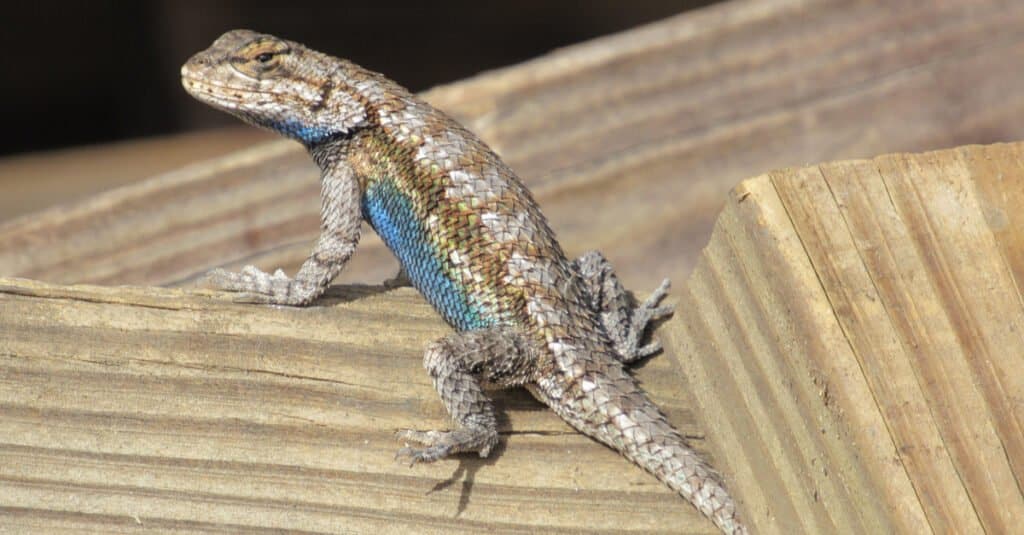
These blue-bellied fence lizards do push-ups to show off their vibrant coloring.
©Isabel Eve/Shutterstock.com
Another common reason why lizards do push-ups is to attract attention from a potential mate. Some species also do this to show off bright coloring on their bodies. Typically, males display this gesture, though females occasionally engage in it in this context, too.
Aggressively doing push-ups at someone you’re interested in doesn’t sound like the best way to attract a partner. When it comes to lizards, however, it’s the perfect way to find a date. In most cases, lizards will simply do push-ups near a hopeful mate to draw more attention to themselves. For certain species, though, they do it to show off a certain body part, like their dewlap, or a particularly bright patch of color somewhere on their body.
The male western fence lizard, for instance, does push-ups to better display its bright blue belly to females. Females within the species tend to prefer males with more vibrant blue coloration, so the males show off this trait as much as possible.
Other species, such as male green anoles, engage in the push-up display to show off their bright red dewlaps to females. Like with the western fence lizards, female anoles tend to favor males with more brightly-colored dewlaps. As the males push out their dewlaps and rapidly bob up and down, they will get more attention from nearby females, or more importantly, possible mates.
“Pay Attention to Me” Push-Ups
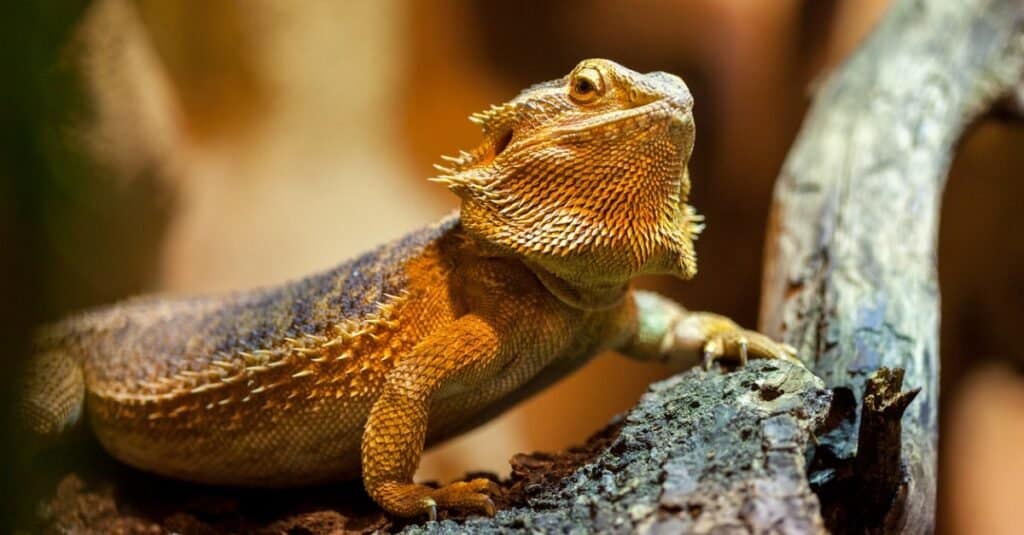
Lizards in captivity such as
bearded dragons
often do push-ups to get their owners’ attention.
©iStock.com/huettenhoelscher
Oddly enough, another surprisingly common reason why lizards do push-ups is to simply get another lizard’s attention. Lizards in captivity will often do push-ups solely to catch the attention of their owners or handlers, usually either out of hunger or boredom. Alternatively, some lizards will do push-ups at humans in an attempt to signal dominance, as they interpret us as potential predators.
If you own a pet lizard, you may have seen your scaly pal bobbing away at…seemingly nothing in particular. Well, in this case, your lizard was likely trying to either grab your attention (for you to give them food or enrichment) or signal to you that if you mess with them, there’s going to be problems.
This behavior is actually very common amongst lizards in captivity! It’s typically nothing to worry about, especially if your pet is still getting used to you/their new home. In short, your lizard is likely communicating one of two things with their push-ups in this context:
- They’re still nervous around you and are attempting to make themselves look too scary to mess with (after all, they instinctively interpret us as predators).
- They’re simply trying to get your attention. This could be for anything from their water bowl being empty, them being bored, or even you being two minutes late bringing them dinner.
Either way, these “pay-attention-to-me-push-ups” are just another way our pet reptiles communicate with us despite the obvious language barrier.
How do Lizards Show Anger?
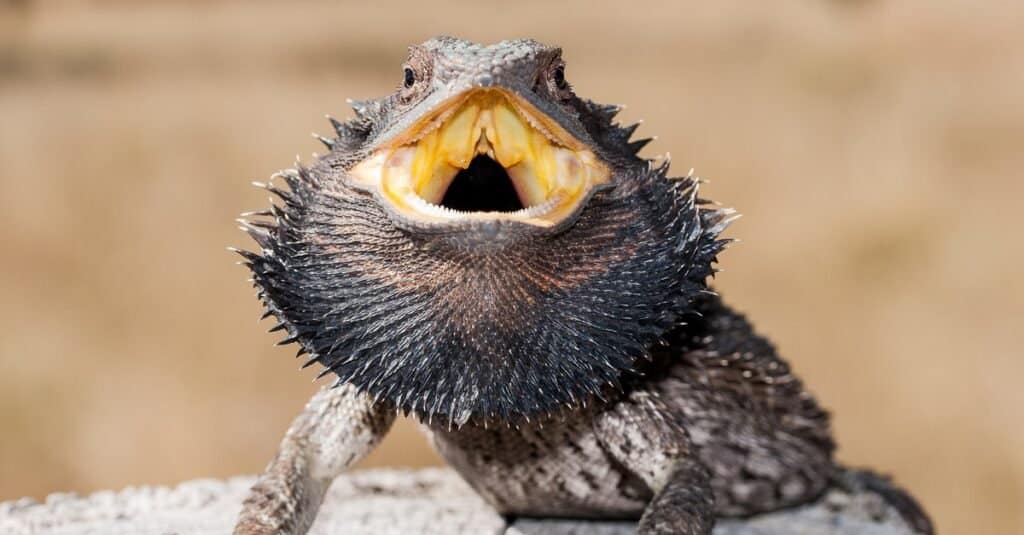
Many bearded dragons display behaviors such as bearding and hissing when they are being territorial or feel uncomfortable.
©Ken Griffiths/Shutterstock.com
Lizards show their anger in a variety of ways, and one such way is in a display called bearding, which is when they fluff their beards. When this occurs, it is usually a threatening sign. By exhibiting this bearding display, it makes their beards appear bigger and scarier, and often, a change in color will accompany the display, turning from their regular shade to a darker color.
Although there are other reasons why they may fluff their beards, in addition to gestures of anger. They may be trying to intimidate another male, or they may simply be stretching. Another way they may express anger is when they hiss, which may accompany their ‘fluffing’. One of the more common signs indicative of anger is hissing. This is also how they warn you that they are not only uncomfortable but they feel threatened and will be accompanied by an open mouth.
The photo featured at the top of this post is © Steve Shoup/Shutterstock.com
Thank you for reading! Have some feedback for us? Contact the AZ Animals editorial team.



